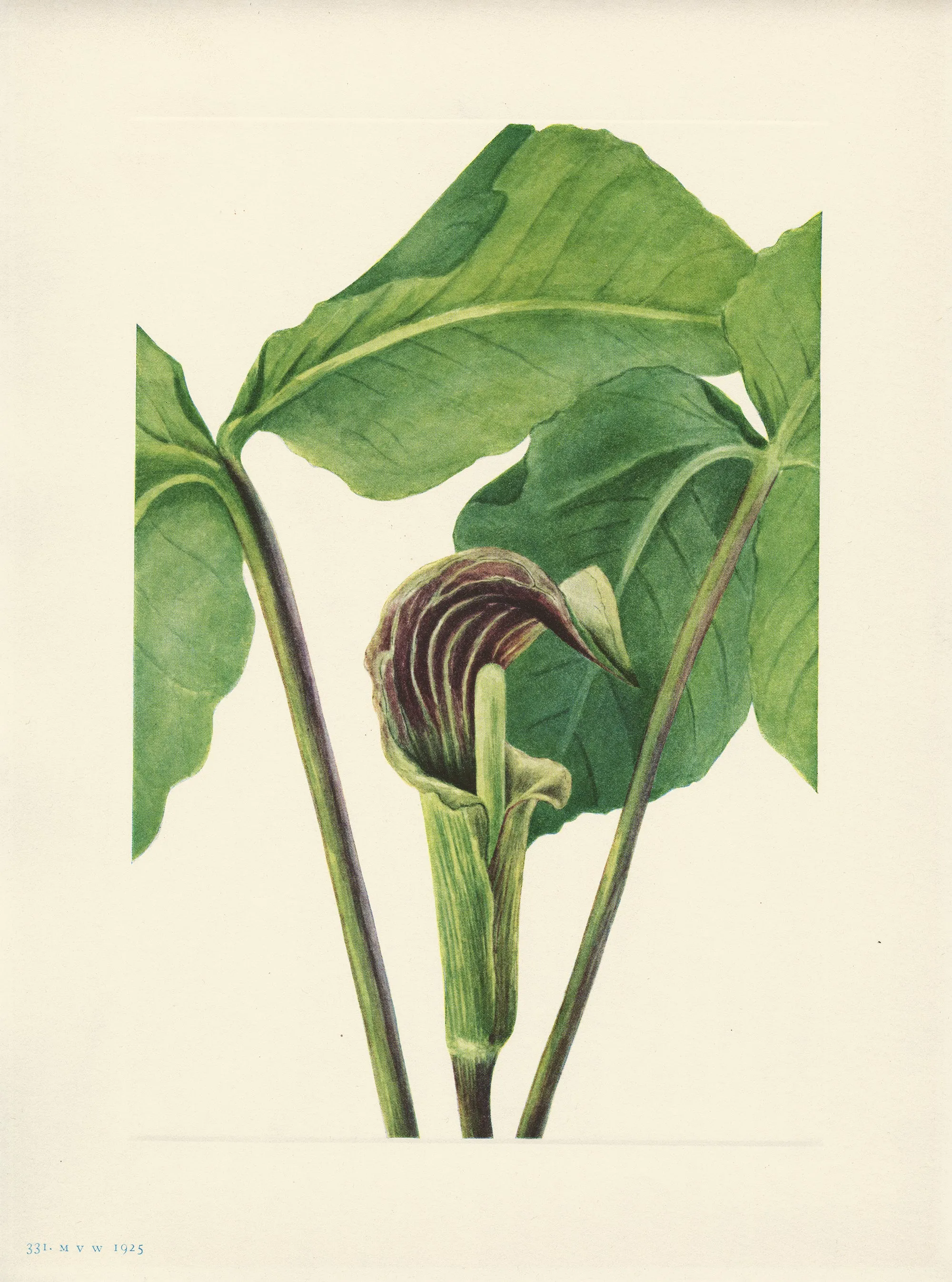Artsaema triphyllum (Linnaeus) Torrey Jack-in-the-pulpit, sometimes called Indian turnip, comes into bloom in spring along with violets and columbines. It thrives in rich moist woods, and in favorable surroundings develops into a plant two feet tall. Some spathes contain staminate flowers and others pistillate flowers. In some cases both staminate and pistillate flowers are found in the same plant, the latter growing above the former, at the base of the club. The fruit, which consists of a ball of bright red berries, ripens in September. The bulblike corm, sunk deep in the ground, is very pungent when tasted raw, causing the mouth and tongue to burn for hours afterward. It was used by the Indians as food, however, after baking or boiling to remove the irritating sub- stances. The Arum family, to which Jack-in-the-pulpit belongs, is com- posed chiefly of tropical plants but includes the skunkcabbage, wild calla, greendragon, and goldenclub, as well as the cultivated calla. Jack-in-the-pulpit is found from Florida to Kansas and northward to Nova Scotia and Minnesota. Our specimen grew at Bryn Mawr, Pennsylvania. Jack-in-the-pulpit preaches today, Under the green trees, just over the way; Squirrel and song sparrow high on their perch, Hear the sweet lily-bells ringing to church. Come hear what his reverence rises to say, In his low painted pulpit, this calm Sabbath day. Fair is the canopy over him seen Penciled by nature's hand, black, brown and green. Green is his surplice, green are his bands; In his queer little pulpit, the little priest stands. Clara Smith
We produce all of our on images in shop, and we are happy to offer custom work to our customers. Please inquire for pricing and options.












